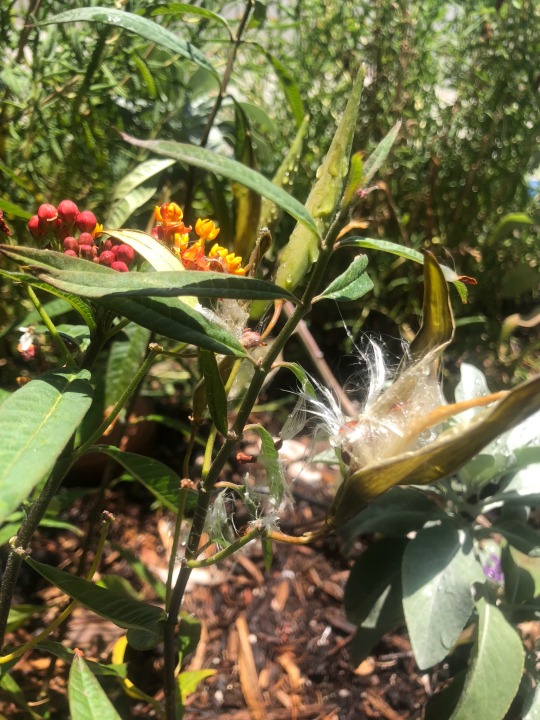#tropical milkweed
Text
Milkweed Lovers Everywhere, Heed My Warning
By all means let me know if I'm wrong here, but if I'm not wrong then we're looking at a serious (at least to me) problem.
I've been trying to stray away from Tropical Milkweed (Asclepias curassavica) and towards more native species in my area--things like swamp, sandhill, etc--and Butterflyweed (Asclepias tuberosa) fits in that category for me. It's hard to find native milkweed plants in stores--even places I've gone to in the past that had a handful of native species are currently only selling Tropical Milkweed. Even still, I know that there's been a good bit of buzz around growing native species, and some stores I've visited have said they're trying to find vendors with native species--they're not only selling Tropical for lack of trying.
So imagine my surprise--and delight--when I go to Lowe's and see Asclepias tubersoa blazoned on a plant label!
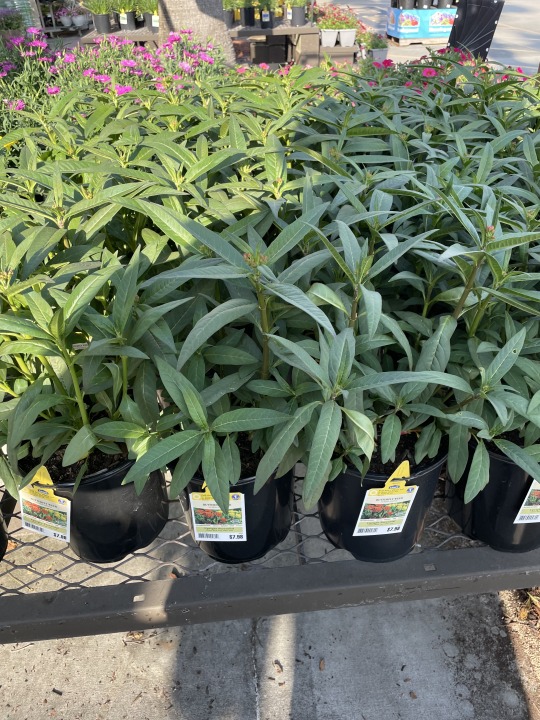
And imagine my surprise when it's being sold right next to Tropical Milkweed and looks almost identical to it.
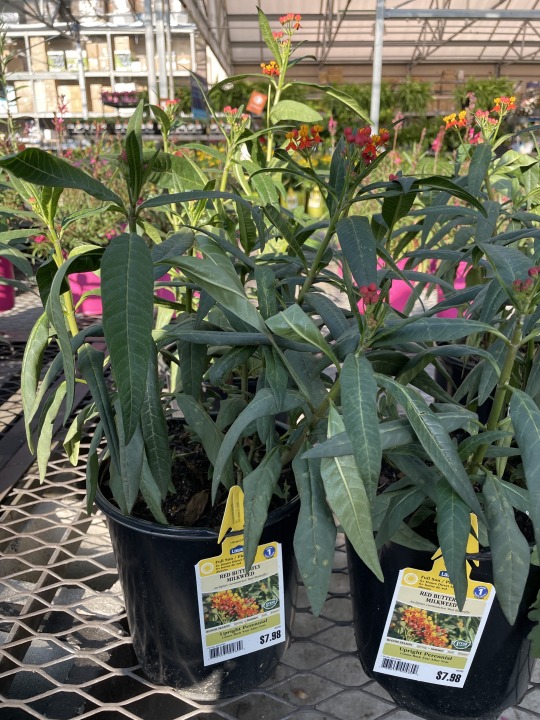
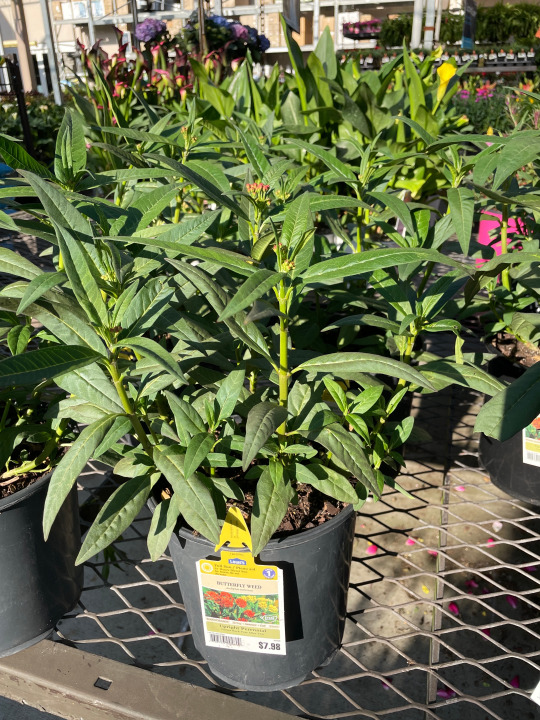
I was immediately suspicious--especially considering the red flower buds on the 'Butterfly weed'. I've grown Tropical Milkweed for several years, and while it's been awhile since I've seen a Butterfly Weed plant outside of a photograph, these definitely didn't look like what I'd seen. Not to mention, I'd only heard of Asclepias tuberosa flowering in orange or yellow--not red. Of course, at the same time, I'm not a professional botanist, and a quick google search did declare that butterfly weed can grow in red (though the images all look like asclepias curassavica to me...).

(Image from the Native Plant Database. Looking at this picture, I should've realized where this was going sooner...)
So I did the reasonable thing and bought two of them. I figured if the red buds somehow turned orange and were actually Butterfly Weed, then I'd be perfectly satisfied. If they turned out to be Tropical Milkweed, well, I simply would give them to my neighbor who's fond of them, or find something else to do with them.
(I feel the need to emphasize; there are a lot of people online who are in the 'if you plant tropical milkweed you're a horrible person and intentionally killing monarch butterflies' camp. I am not one of them; it's not invasive in my area of Florida, it just takes a little bit of extra managing in terms of cutting it back in October/November.)
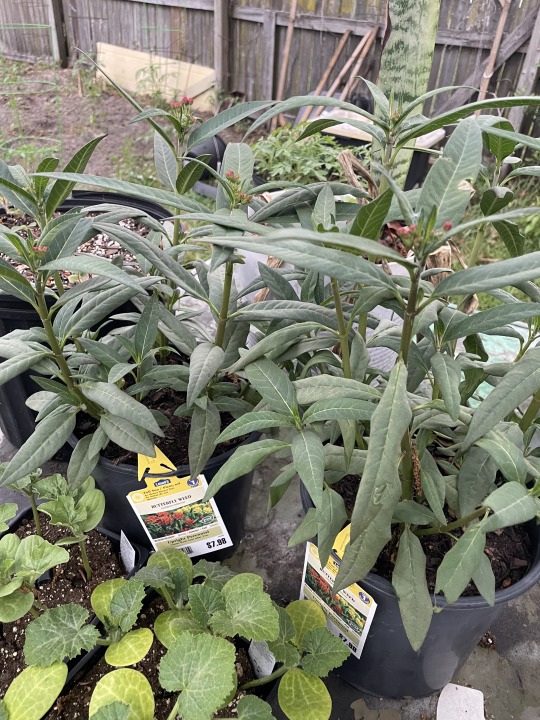
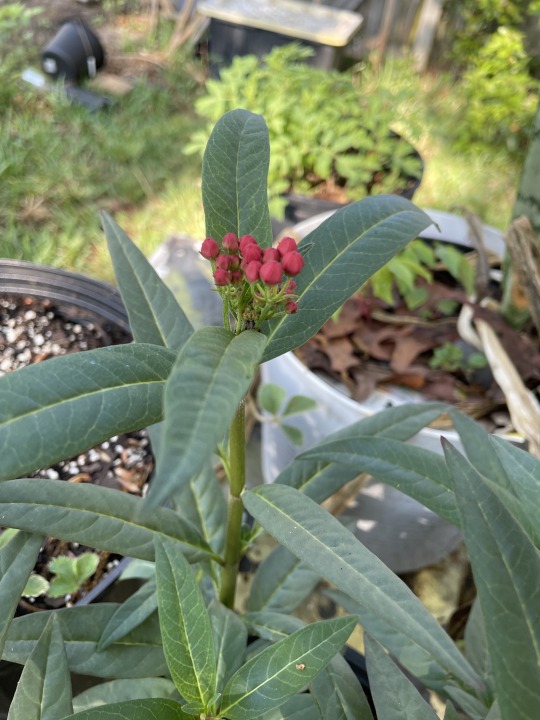
I ended up in the same Lowe's again today, shopping for my mom, and took a peek at their plant selection. Lo and behold, I found the Butterfly Weed, and...

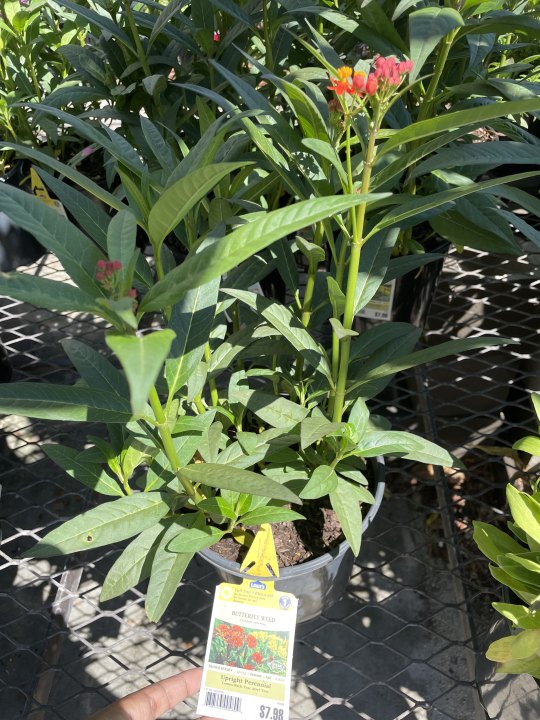
This sure does look like Tropical Milkweed to me, and to others in my gardening server, yet it's still labeled as 'Butterfly Weed.' Also, I didn't see any Tropical Milkweed on any of the shelves--at least, nothing labeled as Tropical Milkweed. Instead, all I saw was Tropical Milkweed disguised as Butterfly Weed.
This is, in my humble pollinator garden enthusiast opinion, a problem. At best, Lowe's--or the company they source their plants from--is mislabeling their plants on accident. Which could cause problems if people are buying the plants and putting them in a place that's not quite the right condition for them, or create severe disappointment if someone's excited to grow the native Asclepias tuberosa only to end up with something else entirely. At worst? Lowe's--or the company they source their plants from--are aware that people want to grow native milkweed and are either unable to or too lazy to grow them, and would rather try to get away with selling Tropical Milkweed--which has been growing increasingly controversial in some gardening circles--and still reap the benefits and profits of selling native milkweed species.
However, I'll be real? I'm not sure what exactly to do about it. So I guess I'm just letting everyone know; if you see 'Butterfly Weed (Asclepias tuberosa)' in your local Lowe's, at least double check. Otherwise, you may plant Tropical Milkweed/Scarlet Milkweed (Asclepias curassavica) instead.
#milkweed#gardening#flowers#pollinator gardening#pollinator garden#Lowe's#tropical milkweed#butterfly weed#asclepias curassavica#asclepias tuberosa#outdoor gardening#flower gardening#ani rambles#out of queue#idk how legible this post is but I hope its at least SOMEWHAT legible yknow?
928 notes
·
View notes
Text
Tropical Milkweed, Its Problems, and What To Plant Instead
I am writing this to atone for the sins of my past (handing out tropical milkweed cuttings to my friends and teachers before I knew better).
(Also let me make this clear I am Floridian I am writing this from the perspective of someone in the United States if you live in Tropical Milkweed's native range this doesn't apply to you go forth pogchamp)
Look online, on TV, in books, in newspapers, left, right, up, down, anywhere, and you'll see people talking about how planting milkweed is crucial, essential for the survival of monarch butterflies. Milkweed is the only plant that monarch caterpillars can eat as they're growing, and the loss of it in our wild spaces is one of the most direct links to the ecological extinction speedrun of not just monarchs, but dozens of other insects who rely on its abundance of nectar-filled flowers to survive. You'll be urged to run, not walk, to your nearest garden center, buy as much milkweed as you can, and hurry fast to plant it in your gardens and be part of the solution, not the problem. The issue is that, oftentimes, the milkweed you leave the store with is a vibrant red and orange, with pointed green leaves, dozens like it lining the shelves across stores all over the nation...
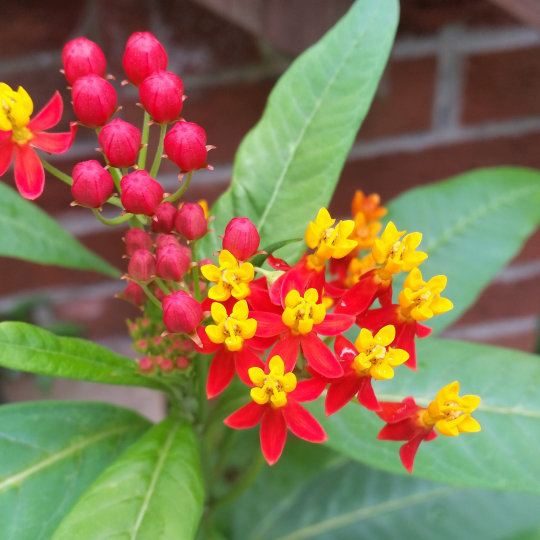
Tropical milkweed. Scarlet milkweed. Bloodflower. Mexican butterfly weed. Asclepias curassavica. This plant is a being of many names, and our culprit of the hour.
'Culprit? Culprit of what?' Culprit of enticing people to buy it under the guise of helping, only to possibly cause more harm than good.
Let's discuss.
Tropical Milkweed (Asclepias curassavica) is a gorgeous milkweed (especially the yellow variety? ooh, that had me in a grip as a teen) that's easy to obtain--too easy. It lines the shelves of stores like Walmart, Lowe's, Home Depot, and even hundreds and dozens of smaller garden stores, and is sold for reasonably cheap because its quick and easy to grow from seed and eagerly roots from cuttings. It's extremely popular with butterflies too--in many scenarios, Tropical Milkweed will be preferred as host plants over other related species like Butterflyweed (Asclepias tuberosa), and its also popular with other species of butterfly, bees, and wasps as a nectar source. It lasts well into winter in some areas of the United States, is quick to regrow when cut back, and doesn't die back for periods of the season like some other milkweeds do. It's eager to reseed, creating capsules with tens of dozens of seeds and scattering across the winds with the help of little silky parachutes much like the ones dandelions are known for.
'Ani, what's the problem with that? This all sounds like its great for monarchs!'
See, here's the kickers. In fact, here's several kickers. Here's an entire mollywhopping of kickers.
OE Infections
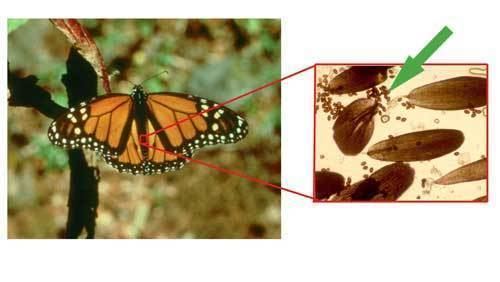
In the temperate areas that it doesn't die back over winter (or even, in some cases, where it doesn't die back during the season like other milkweeds), it can become a host for OE. OE is short for Ophryocystis elektroscirrha, and its a protozoan parasite that can and frequently does infect monarchs. As infected monarchs visit different plants--whether its to drink nectar, to lay eggs, or even just doing a fly-by of the garden--they drop spores from their wings that can then fall onto the leaves, flowers, and even any eggs already on the plant. As caterpillars hatch and begin to eat the plant, they ingest the protozoan, which begins the cycle anew. High OE levels in adult monarchs have been linked to lower migration success, reductions in body mass, lifespan, mating success, and flight ability. And that's if the caterpillars don't succumb prematurely to the infection, or if they're able to even exit their cocoon and fly once they finish pupating--deformed wings are frequently a result after infections. Now, OE is a parasite that's evolved alongside monarchs--and monarchs are usually able to handle an infection just fine, but if they're carrying a high load? That's where the problem lies.

What role does tropical milkweed play in this? Most milkweeds die back after blooming, at least once or even twice per season--and the parasite dies alongside them. As native milkweeds push out fresh foliage, its parasite-free, offering a healthy new buffet for caterpillars. Tropical milkweed... doesn't do that. If nothing's done, (at least in my state of Florida) tropical milkweed will stay fresh and green all the way up until the first real frost hits way in December--and that's if there's a hard frost, when you travel farther south. And during all that time, OE levels are building up on the leaves, so any future caterpillars that feed on this plant are doomed the instant their egg is laid on a leaf.
Its not that it's utterly impossible for a monarch to get infected with OE on any other kind of milkweed--monarchs are known for their traveling habits, and the chances of them happening upon a different milkweed plant than the tropical milkweed in your backyard is pretty high. But whereas native milkweeds die back and essentially reboot their system with fresh, disease-free leaves at least once a season, tropical milkweeds are like downloading a virus onto a USB and then passing it to your friends.
But that's not all, either. Time for kick 2.
Migration Interruption

Sit with me a moment and imagine you're a monarch butterfly. You're hardwired to know that as your food source starts dwindling at home, its time to get a move on and fly on down to the family's vacation home in Mexico for the winter. The buffets shut down, you exit stage left. But on your way to what's essentially a season-long smorgasbord with friends, you find... a buffet is still open. You're supposed to leave when the buffets are shutting down, but this one's up and running, lights are on, and plenty of people are there having fun, so you step in to relax. You'll take your trip later.
Now imagine a bit after you entered that buffet, the staff stuffed the guests into the walk-in freezer, locked the door, turned off all the lights, locked up the building, and left.
That's basically what tropical milkweed being 'evergreen' is doing to monarch butterflies in the fall and winter seasons. In areas up north where it can stay growing far later into the fall/winter months--or worse, in the south, where it can basically be evergreen until a hard frost (if one even happens), it can interrupt the monarchs' iconic migration cycle. They'll stay in place and continue breeding, living life like they aren't supposed to be a country away--until a frost hits, and they're dead in a snap. And if there's not a frost, you're getting a bunch of OE spore-ridden monarchs flying around a bunch of OE spore-ridden milkweed plants that the butterflies who followed the rules and overwintered in Mexico are gonna be returning to. POV you're starting a family in a house so laden with asbestos and black mold that there's practically black dust floating around.
This is already pretty bad. Can it get worse? Absolutely. Kick number 3.
It's Pretty Invasive (in the US)
It's fast growing, its eager to go to seed (so eager that it can flower and produce seed at the same time), its growing all throughout winter--which would be great, if it were native to the United States. Unfortunately, it isn't! As one could imply from the name, Mexican butterfly weed is native to--well--Mexico, as well as the Caribbean, South America, and Central America.
Further North into the states, and it's more of an annual--a plant that lasts maybe a year tops, dies back permanently, and you go buy more next year, or start from seed. Further south? It's a perennial, baby--which means its got even more time to spread its seeds and really thrive in the warmer climates of places like Florida, Texas, California, etc. Not to mention, as climate change makes temperatures rise, places where tropical milkweed is an annual may quickly begin seeing it stand strong all year...
I won't pretend to be a Professional Milkweed Identifier. I'm getting better at it with time, but I'm not a pro. But most of the time I go outside and I go 'oh, that's a milkweed!' its tropical milkweed. I've seen it grow in the sidewalk cracks of a gardening store I go to--its a clean four feet tall, always flowering, always making seeds. Tropical Milkweed is eager to escape the confines of your backyard, or make more plants in your backyard--I started with 5 plants one year, and the next year I had seven, then twelve, and that's just the ones that didn't get mowed over in the seedling stage...
But wait, that's not all! Kick number 4, baby!
Toxic to Monarchs????
According to the Xerces Foundation, emerging research suggests that tropical milkweed may become toxic to monarch caterpillars when exposed to the warmer temperatures associated with climate change.
'What the fuck, I thought milkweed was good for monarchs! How the hell does that happen?!'
All milkweeds produce cardenolides in their sap--a type of steroid that are toxic to most insects (and even people). Milkweeds create it to repel herbivores that would munch on it otherwise--except for milkweed butterflies (Danainae family), like our legendary monarch, as well as the queen and plain tiger butterfly. Larvae eat up milkweed leaves like there's no tomorrow, to stock up on those cardenolides and become toxic to their vertebrate predators--except for a few species that have evolved to become cardenolide-tolerant (black-backed orioles and black-headed grosbeaks). But, when cardenolide concentrations are high enough, it's too strong for even monarch butterflies to withstand--they die because of the very plant that's supposed to give them life. Kinda fucked up. Comparatively, many native species have lower cardenolide levels--and don't immediately go into flux at higher temps like tropical milkweed does.
'Wait, Ani, if there's all these problems with tropical milkweed, why is it sold everywhere?'
Capitalism. The answer is capitalism.
Well, actually, its a bit more complicated than that but it's also still capitalism.
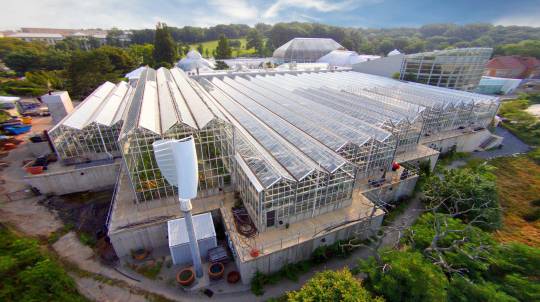
The very same things that make tropical milkweed so invasive and such an issue are what make it so incredibly popular to sell. It's fast growing, and eagerly starts from cuttings as well as from seeds--which is perfect for growing tons of plants in quick and easy batches to send to vendors all over and get a quick profit. It's easy to grow from the home gardener too--its resistant to most diseases, looks gorgeous almost year-round, is quick to return in many areas without even the slightest sign of a die-back, and is popular with monarchs and other pollinators. Want to start a pollinator garden with quick results? Plant milkweed--and when tropical milkweed is all that you see available when you walk into your beloved store, it's what most people are going to get without thinking twice. Not to mention, when you hear it starts quick from cuttings, and you really wanna get your friends and loved ones into pollinator gardening, well... you get well-meaning people sharing invasive plants with their homies, like I did in high school. I've been pollinator gardening for around sixish-sevenish years (I think) and I didn't even catch wind that tropical milkweed was invasive until three years in! To say I was mortified doesn't describe it fully.
'Wait, three years ago? So information about this has been out awhile! Why aren't more places selling native milkweeds by now?! Why are people still buying this invasive milkweed and not native ones?!'
It's capitalism again! But in a different way.
Compared to tropical milkweed, many other milkweeds are a lot more... finnicky to get started, or grow in general. Many of them are a lot slower to germinate, are more prone to failing as seedlings and falling victim to things like 'dampening off' or 'too many aphid' or 'the vibes were wrong.' If they do germinate, they're slower to get to size too--I've grown tropical milkweed from seed in solo cups and gotten something about four inches tall within maybe a month and a half. Some other milkweeds I've grown from seed take about a month and a half to get more than four leaves, or even poke their little green heads out of the dirt. In addition to this, milkweeds have taproots--and some are a lot more friendly to the concept of 'transplanting from a pot to the ground' or 'growing in a pot at all' than others, and tropical milkweed ranks at the top of that list again. Not to mention, their willingness and ability to overwinter in pots--many native milkweeds fail that test, meaning that even if all the resources and efforts are put into getting a milkweed to grow from seed, it won't survive longer than a year in that pot. Considering most milkweeds don't flower until a year or so into their growth, and it's easier to sell plants that are flowering... many plants are a tough sell.
Another reason? Some native milkweeds are way more picky about when they want to make seed pods, or what conditions their seeds want to be grown in. If the seeds are hard to obtain? Good luck growing them in a production greenhouse. Let alone finding seeds for sale to grow them yourself at home--in my hunt for native milkweed species, I've seen packets of ten seeds sold for twenty bucks, packets of 25 seeds sold for anywhere from 50 to 100--meanwhile, you can find dozens if not hundreds of tropical milkweed seeds sold in a pack for maybe a dollar or five.
Let's be real. Producers haven't figured out the magic ticket to pumping out native milkweeds like they have with tropical milkweed--as such, finding native milkweeds for sale is rare, and they're often pricier. And as someone who's been to a native plant sale and found the stands sold out of milkweeds not even 30 minutes into the event--you are likely not the only person wanting native milkweeds. It is war out there in the garden parties.
And that's assuming you've actually found native milkweed for sale! As you get better with milkweed IDs, you'll be able to clearly identify the liars who are telling you they've got something that they don't, but for those who aren't In The Know--if you see a milkweed labeled like a native milkweed and want to buy native milkweed, it might be too late by the time you realize you just got sold tropical milkweed with a mislabel. Whether its on accident or on purpose, it still bites.
I've asked some of my favorite, smaller greenhouses if they'd be willing to start selling native milkweeds. Most of the time I get an exasperated 'I would love to.' But they can only sell what the vendors can produce--so if they can't find a vendor that's selling swamp milkweed (or at least reliably), then they can't give me swamp milkweed when I poke my head in asking if they have any in stock. Of all the times I've gone to dozens of different green houses and gardening events, in different cities even, to see if they have any native milkweeds I've only had success a few times--one small vendor who only has them in stock at events sometimes (and that's if I don't show up late), and the one time I rolled into a not-big-box-but-not-small gardening store near my friends house after being sad that I couldn't find it at a different gardening event. And the one I found there was the last one they had in stock for the next month or two. Until The Vendors get better at growing native milkweeds, your best bet is going to be growing it from seed yourself, getting a start from a friend, or dumb luck at smaller nurseries and events. It's rough out here, friends.
Granted! Keep in mind! That whole last paragraph was personal anecdotes. It's entirely possible that other places' greenhouses have already caught on, and I'm simply in the shadowlands where nobody's selling native milkweeds except for once or twice a year and selling out within 20 minutes of opening their damn booth. And I've heard tell of people getting milkweed popping up willingly in their backyards by doing things as simple as not mowing. I pray you have better luck than I do, young Padawan.
Now, keep in mind, there are people actively working on this. Whether its a team of university scientists dedicating themselves to a project, or a few home-growers in a sunny backyard and a greenhouse doing their damn best to grow native milkweeds as efficiently as possible for themselves and their friends, there are people working on this, sharing advice and communicating online. This isn't some unresolved issue that no one has noticed. We just... aren't at the end post yet. Until then, we scrounge for what we can.
'Oh no, oh god, I have a bunch of tropical milkweed plants in my garden!! Am I a bad person?!?!'
No You Are Not A Bad Person For Growing Tropical Milkweed
And I'm perfectly honest about that. Because I'm here telling you this and I've still got tropical milkweed plants in my backyard. As that one comic once said, about 10,000 people learn something new every day, and unfortunately today that 'new thing' is a bit sad and a bit untimely. In full honesty, oftentimes in my brain I refer to Tropical Milkweed as Starter Milkweed--its what a lot of pollinator gardeners end up starting with, because its just so available! But! There are things that you can do to mitigate the Damage that tropical milkweed can bring to your backyard butterflies.
Step One: Cut back your milkweeds! At least once a year, maybe even twice a year if you want. This will force them to put out new growth, which will be free of OE spores and give monarchs on it a good head start against the Disease. But for sure, for sure, cut your milkweeds back in the fall--once October hits, I go into the backyard and I snip down everything that's tropical milkweed. Usually at this point (at least for me), the milkweeds don't try to grow back again until spring. This is to prevent monarchs from seeing a buffet and getting locked in the freezer.
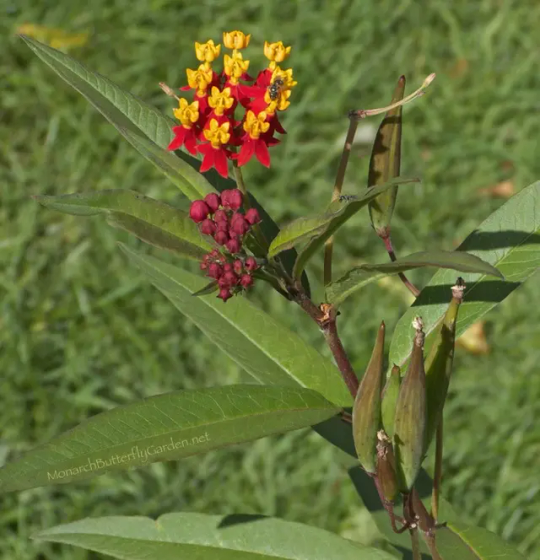
Step Two: Cut back seed pods! You would not believe how many seed pods milkweed makes. You see those little green footballs? You wanna snip these back ASAP. Even if they're tiny, but especially if they're bit. In peak flower production times, I'll go out there at least once a week and just do a look-back and cut them off. You can even yoink them off with your hands if you're in a rush--just don't get that sap into your eyes. If you do this, you're stopping seed production in its tracks--and don't forget, these plants want nothing more than to split those pods open and unleash a hellfire of flying seeds all over the place. They'll float on air, they'll float on water, they'll do whatever until they land on a prime patch of soil and get started.
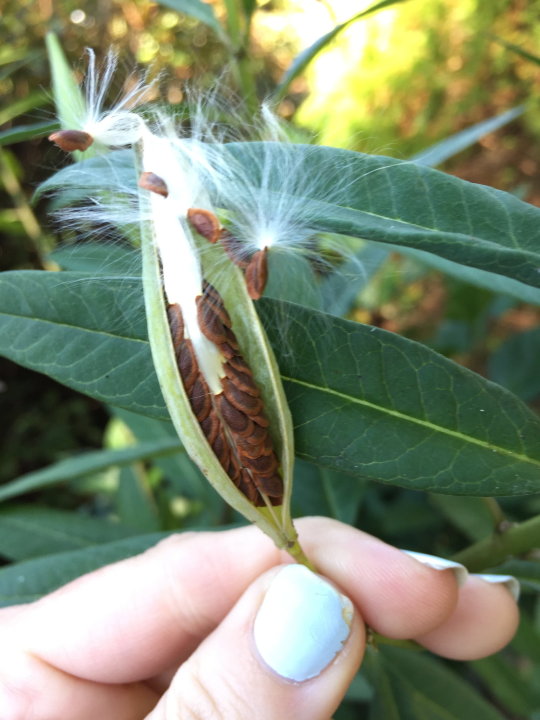
If you see these you're a tinge too late. But also still yoink that off and Dispose of it.
Step 3: Don't give cuttings to your friends. It's tempting. If you're raising caterpillars in a little enclosure and see that every time you refresh your cuttings, the old ones have tons of roots and are ready for a little pot of soil and a name tag? Don't. Resist the best you can. Dispose of your cuttings whenever you go in for a trim.
Step 4: Consider replacing them with something else! I know I already went off about just how hard it was to find native milkweeds for sale, how expensive and difficult they can be to grow--but they're not impossible to grow, and putting in the effort could be worth it! Even as I speak, I'm trying to add as many native milkweeds to my garden as possible--and when I've got something that grows reliably in my backyard, I will eagerly rip up my aging tropical milkweed plants and promptly toss them in the bin so i can put a new, better milkweed in its place. Native milkweeds are more likely to be suited to your environment, making it easier to maintain and more welcoming to the pollinators we gardeners want to help. Not to mention, a lot of them are way pettier than tropical milkweed (in my opinion). Do some hunting online to see what's native to your area--your state's extensions office will likely be great for this! You've likely got great variety--the state of Florida has 21 native milkweeds! Who knows how many your state has! (Not me, I am Floridian, and I am already getting dizzy trying to learn about all 21 of our milkweeds).
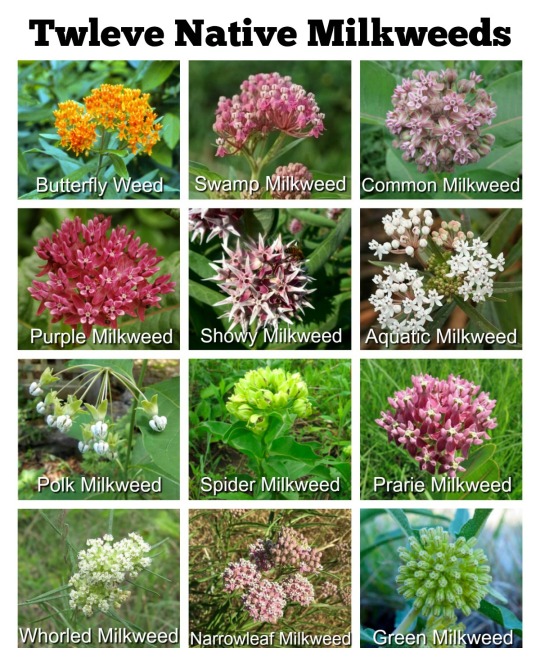
Conclusion!
Anyone who knows me knows I'm not gonna be the one to discourage someone from starting a garden, especially a pollinator gardener, and especially growing milkweed. But avoid tropical milkweed when you can--the harms it can cause far outweigh the quick satisfaction of a busy garden it can bring. Take some time to select a native plant more suited to your area, give it some friends and some time, and soon you'll have an amazing pollinator garden that'll be teeming with life!
#milkweed#tropical milkweed#asclepias curassavica#asclepias#outdoor gardening#succulents#bloodflower#pollinator garden#pollinator gardening#monarch butterfly#ani rambles#out of queue#what was it three hours ago that I was declaring that I wasn't gonna write up a long research post again?#now here i am at 3:30 am ranting about milkweed with like a dozen sources#granted this is nowhere NEAR as long as the biodiversity saga was BUT STILL#i told myself i was gonna write today... i meant one of my novels NOT RANTING ABOUT MILKWEED#if this post blows up this is gonna go on my wall of 'posts that i thought of on the toilet that got way more popular than I expected'#there's not a lot of posts on that wall maybe 2 or 3 but its weird that its happened that many times already
250 notes
·
View notes
Text
Very Important: babies have arrived at my work
1. the milkweed exploded in flowers over the weekend and there are already largish monarch caterpillars on it

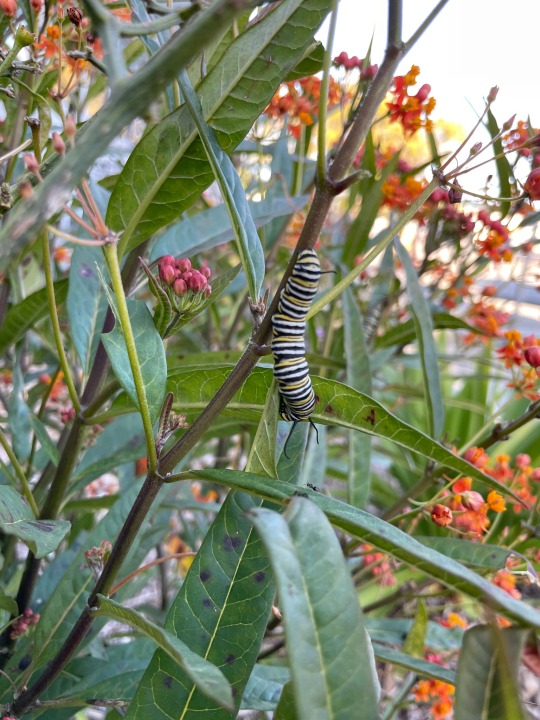
2. at least one baby mantis has emerged from the breakroom ootheca!!


3. the house finch eggs in the nest behind my desk have hatched!!!!!!!!
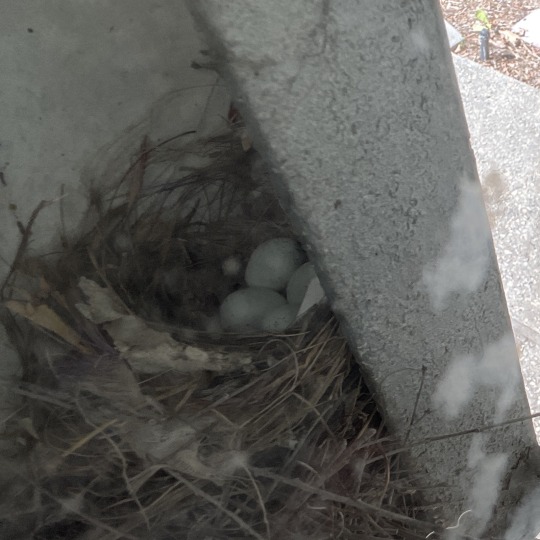
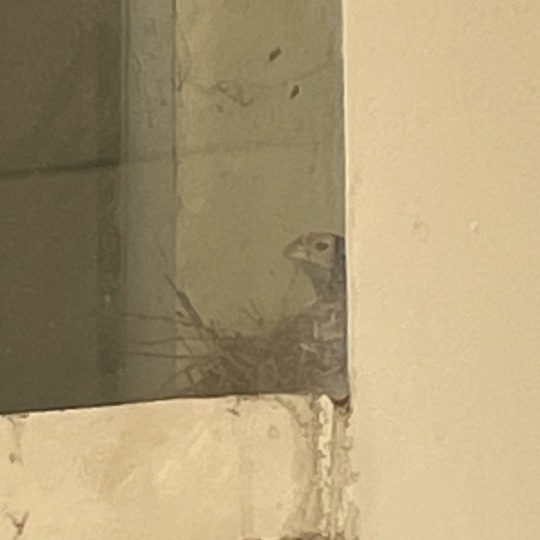
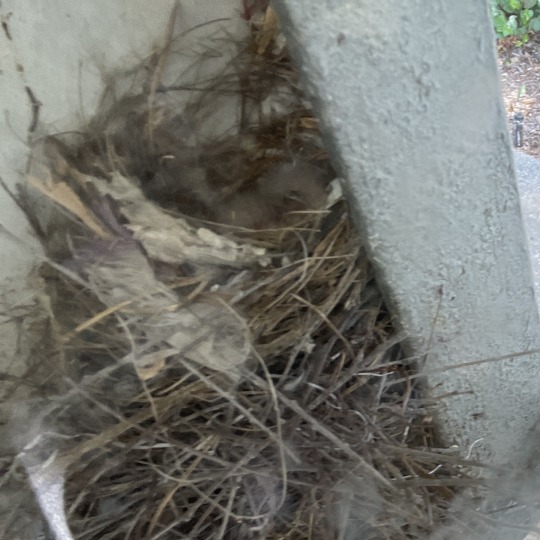
(l: 4 bluish specked eggs. m: mama bird. r: indistinct baby birds???) (i need you to trust me on this one; i know the picture looks like smears or glare on the filthy window but i swear mama bird was feeding babies even if all i could see was her smacking her beak when she lifted her head)
#it was a Big Day my friends#my local fauna#my crappy iphone photography#library avenger#i love birds#critters not otherwise specified#tropical milkweed#monarch caterpillar#arizona mantis#house finch
6 notes
·
View notes
Text




Asclepias curassavica, tropical milkweed, has gained a bit of a bad name in North America, since where it's not native, its perennial lifecycle can result in greater monarch parasite loads. But where it's native in South America, this beautiful milkweed is vital for monarchs and other species of Danaus butterfly, such as the southern monarch shown here.
53 notes
·
View notes
Photo

Tropical Milkweed by karthik_83 on iNaturalist.
This work is licensed under CC BY-NC-ND 4.0.
#tropical milkweed#asclepias curassavica#milkweed#seeds#fruit#portrait#wild#wildflowers#botany#creative commons#creativecommonsplants#inaturalist#plants#plant blog#plant photography#brown
3 notes
·
View notes
Text
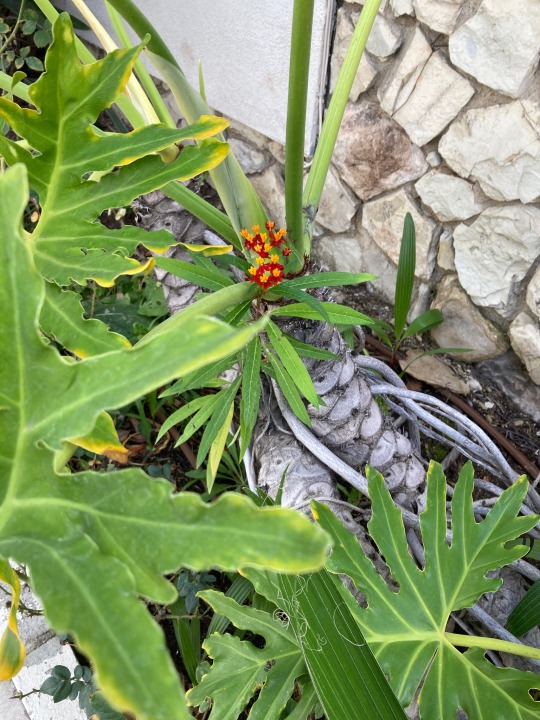


#tree philodendron#philodendrons#thaumatophyllum#tropical milkweed#butterfly weed#asclepias curassavica#van nuys
2 notes
·
View notes
Text

Monarch on milkweed throne
3 notes
·
View notes
Text
SO MAD that people with good intentions go to plant nurseries wanting native plants and are sold invasive and unsuitable plants under the guise of ‘good for pollinators :)’ etc. go pester them for a local plant or seed packet that appeals to the pollinators that like, actually exist near you
#like okay it's good for pollinators... that exist in a different continent#this is tropical milkweed all over again where now we have to take two steps backward and redo all of it
3 notes
·
View notes
Text
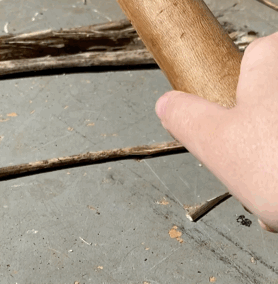
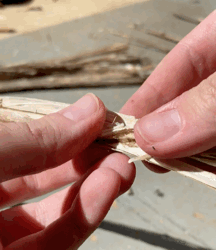
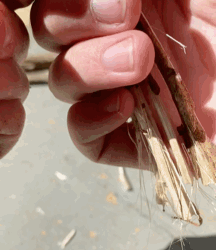
breaking open dried milkweed stalks to collect their bast fibers.
i pounded them with a makeshift billet against a smooth surface to break them similar to how ive broken brambles before, and then snapped the pith in order to get only the outer fibers.
At this point i had a bunch of the papery skins attaching all the fibers together, like the image just below. But peeling them off is both inefficient and can lead to breaking

in order to get rid of the outer layer, i rubbed/rolled them vigorously between the palms of my hands, breaking it into flakes that either fell off or can be combed/carded out. it was too difficult to film but basically the same as making a friction fire (although easier for sure).
At this point i had a handful of fibers, still long but in need of combing. I have a fine-toothed comb i use for a lot of fiber stuff, and ran that through it
I'll leave the sound on this one because it's an interesting auditory experience, some might like it some might hate it. Note, be prepared to sweep afterwards!
i used to worry about combing stuff like this too much, and i sort of still am, but its important to remember that what im removing are fibers that would otherwise be too short or fragile to include in a refined long-fiber bundle. What im going for is a line flax/fluff flax-like combo; aka i comb out the short fibers and then i have a bundle of extra long ones to work with!

the result is two bundles of different textures and potential
i made a little test string with the "line" milkweed, but i have yet to do anything more with it

as for the fluff, i carded it out!

i made it into a rolag that i then spun up on my tiny spindle
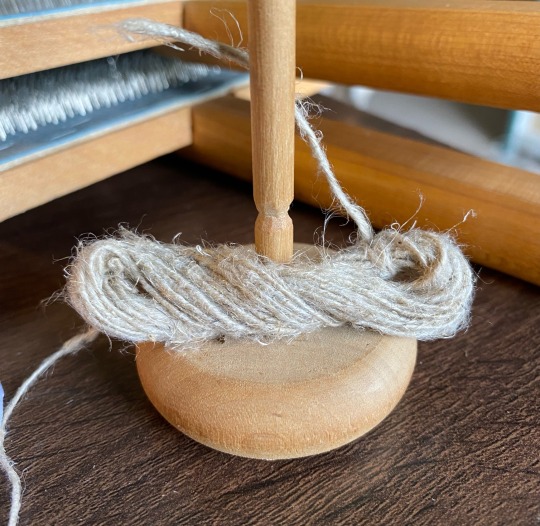
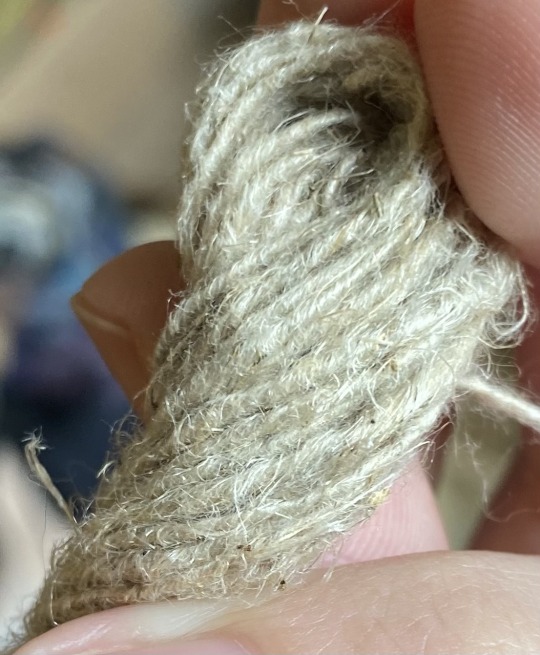
I quite like it. It definitely reminds me of flax/linen, which makes sense since it's also a bast fiber. Milkweed is often known for being extremely strong; i've heard from a fiber class instructor that you can tow a car with a finger-sized rope of it
I don't know exactly what kind of milkweed this is , but i've heard swamp milkweed is top of the class for fiber. orange butterflyweed is a bit weaker than this one (which might be swamp, might not)
(Also note, if you plant milkweeds, don't plant tropical milkweed outside of its native range! it's not as good as the native ones and can even increase disease in monarchs since it doesnt die back in warm winters)

anyways, have a lil monarch caterpillar!
#crafts#fiber arts#cordage#natural fibers#milkweed#bast fibers#nature#earth skills#drop spindle#handspinning
5K notes
·
View notes
Photo
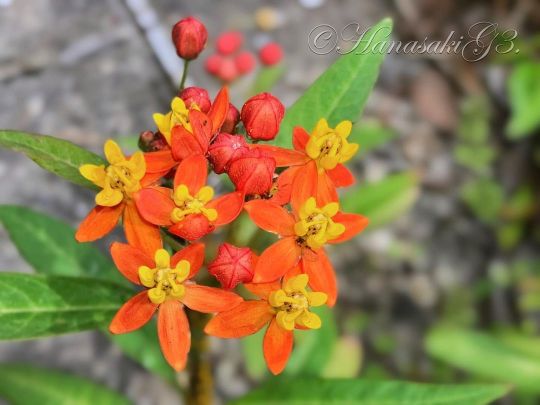
アスクレピアス #asclepias #curassavica #トウワタ #tropical #milkweed #ツルワタ #唐綿 #ヤナギトウワタ #オオトウワタ #キョウチクトウ科 #flower #花 https://www.instagram.com/p/CdvAh0zBT3k/?igshid=NGJjMDIxMWI=
0 notes
Text
I remember as a kid in the 80s that these iconic large butterflies were everywhere in our garden, along with swallowtails of several species. It's been so disheartening to see an insect that was so plentiful be on the brink of extinction just a few decades later.
Individually we can only do so much about the effects of anthropogenic climate change, but here are a few things you can do to help monarch butterflies if you're in their range:
--No pesticides! These chemicals don't discriminate, and will harm all sorts of insects, not just the intended targets. In fact, the fewer yard chemicals you use, the better for your local ecosystem.
--Plant milkweed that is native to your area; even a few plants in pots count! Live Monarch (US), Monarch Watch (US), and Little Wings (Canada) all have free native milkweed seeds on a limited basis--and they appreciate donations of funds to help pay for more, too. Be aware that a lot of the milkweed on the general market consists of non-native tropical species that host parasites and also bloom late enough that they may cause monarchs to stop migrating south to overwintering grounds.
--Put out a watering station consisting of a shallow dish with a layer of rocks on the bottom and just enough water to not quite cover them so the butterflies can land and safely drink water without falling in.
--Support organizations like the ones mentioned above, and the Xerces Society of Invertebrate Conservation, which all help to protect monarch butterflies and other invertebrates.
#monarch butterflies#Danaus plexippus#butterflies#insects#invertebrates#invertblr#arthropods#endangered species#North America#extinction#environment#environmentalism#conservation#ecology
162 notes
·
View notes
Text
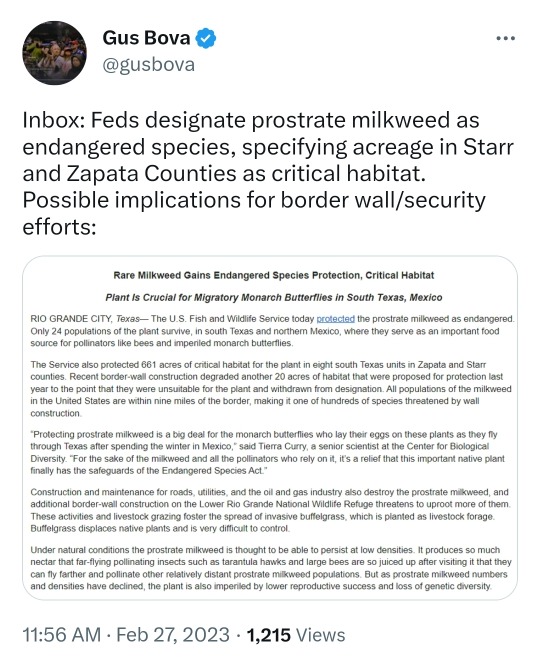
Text is from the Center for Biological Diversity:
For Immediate Release, February 27, 2023
Contact:
Tierra Curry, (928) 522-3681, [email protected]
Rare Milkweed Gains Endangered Species Protection, Critical Habitat
Plant Is Crucial for Migratory Monarch Butterflies in South Texas, Mexico
RIO GRANDE CITY, Texas— The U.S. Fish and Wildlife Service today protected the prostrate milkweed as endangered. Only 24 populations of the plant survive, in south Texas and northern Mexico, where they serve as an important food source for pollinators like bees and imperiled monarch butterflies.
The Service also protected 661 acres of critical habitat for the plant in eight south Texas units in Zapata and Starr counties. Recent border-wall construction degraded another 20 acres of habitat that were proposed for protection last year to the point that they were unsuitable for the plant and withdrawn from designation. All populations of the milkweed in the United States are within nine miles of the border, making it one of hundreds of species threatened by wall construction.
“Protecting prostrate milkweed is a big deal for the monarch butterflies who lay their eggs on these plants as they fly through Texas after spending the winter in Mexico,” said Tierra Curry, a senior scientist at the Center for Biological Diversity. “For the sake of the milkweed and all the pollinators who rely on it, it’s a relief that this important native plant finally has the safeguards of the Endangered Species Act.”
Construction and maintenance for roads, utilities, and the oil and gas industry also destroy the prostrate milkweed, and additional border-wall construction on the Lower Rio Grande National Wildlife Refuge threatens to uproot more of them. These activities and livestock grazing foster the spread of invasive buffelgrass, which is planted as livestock forage. Buffelgrass displaces native plants and is very difficult to control.
Under natural conditions the prostrate milkweed is thought to be able to persist at low densities. It produces so much nectar that far-flying pollinating insects such as tarantula hawks and large bees are so juiced up after visiting it that they can fly farther and pollinate other relatively distant prostrate milkweed populations. But as prostrate milkweed numbers and densities have declined, the plant is also imperiled by lower reproductive success and loss of genetic diversity.
Just 24 populations of prostrate milkweed remain in Starr and Zapata counties in Texas and in Tamaulipas and eastern Nuevo León in Mexico. Nineteen of those populations are rated in low condition, the remaining five are in moderate condition and none are in high condition — indicating acute imperilment.
The Endangered Species Act has been successful in keeping more than 99% of species under its protection from going extinct. But long delays in adding animal and plant species to the endangered list have heightened the perils and made recovery more difficult and expensive. For example, the Service must decide by the end of 2024 whether to protect monarch butterflies as threatened, 10 years after a petition seeking to protect them under the Endangered Species Act was filed.
The prostrate milkweed listing comes in response to a Center lawsuit to gain final decisions on protection for 241 plant and animal species threatened with extinction, including the prostrate milkweed and more than 35 others in Texas. The prostrate milkweed was the subject of a 2007 protection petition by WildEarth Guardians.
The prostrate milkweed’s low and sprawling leaves and stem wilt during droughts. But the plant’s subterranean tuber stays alive and after soaking up moisture from occasional tropical storms sends up stalks and pink and yellow flowers.
175 notes
·
View notes
Text

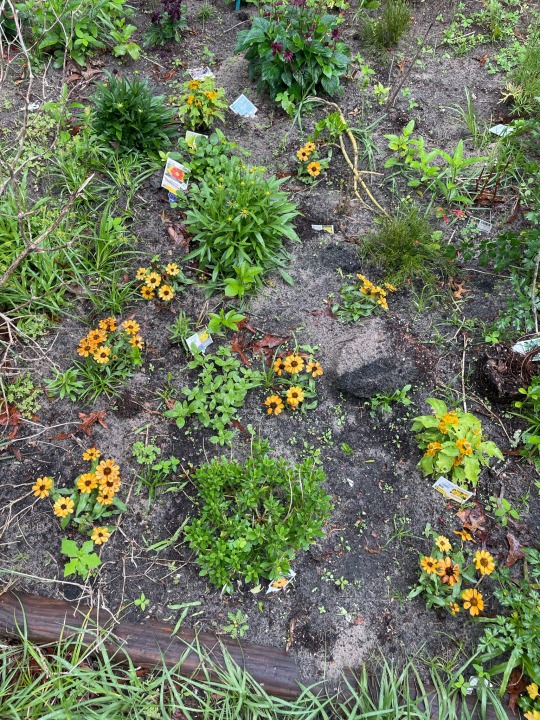

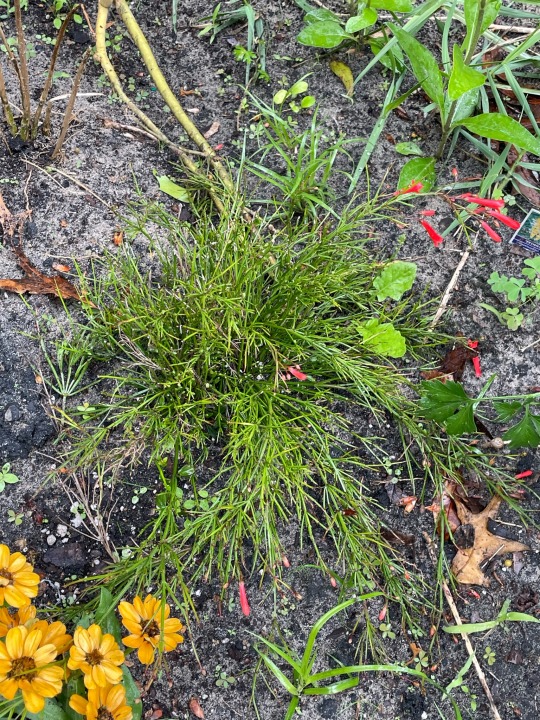
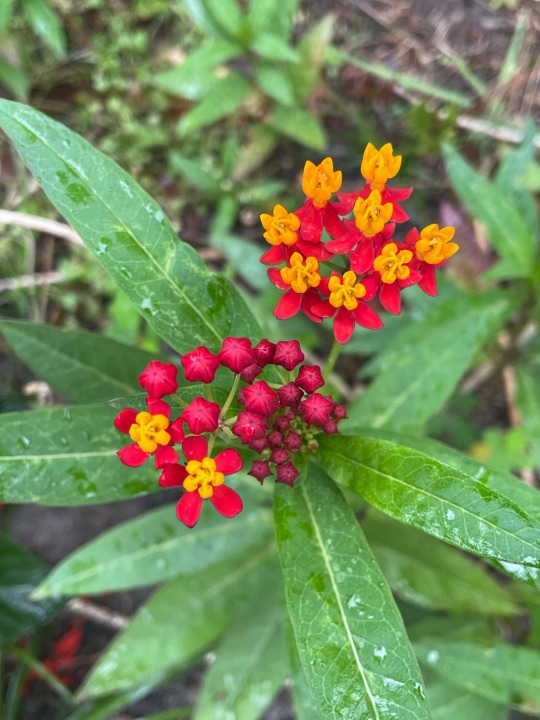
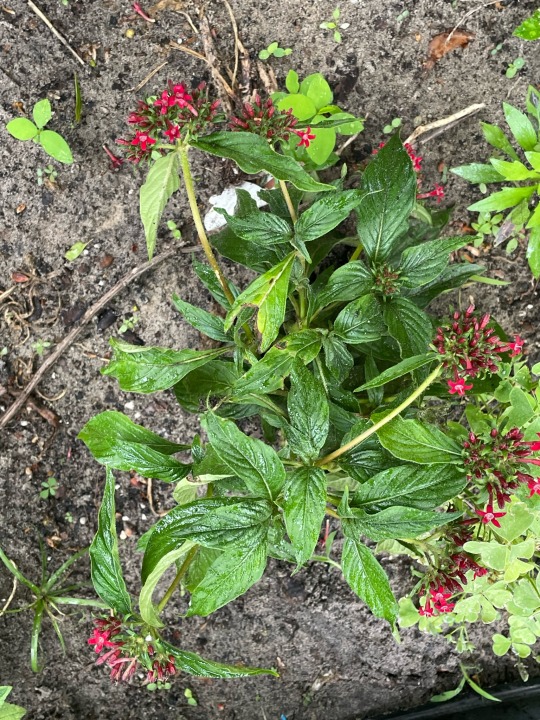
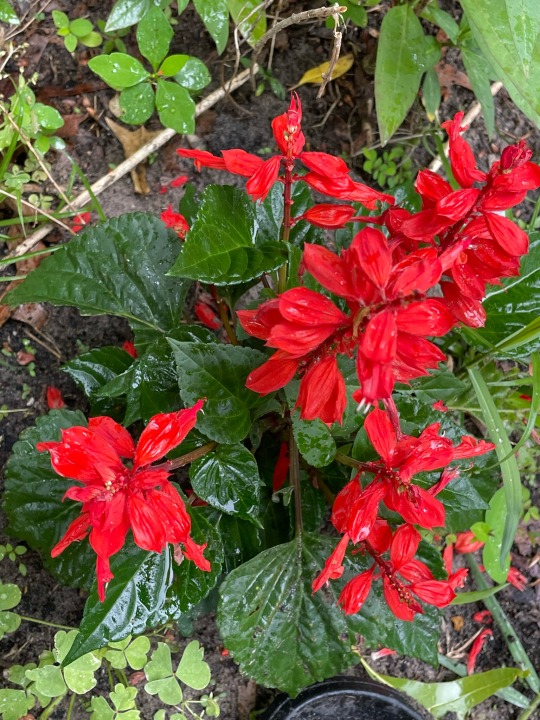
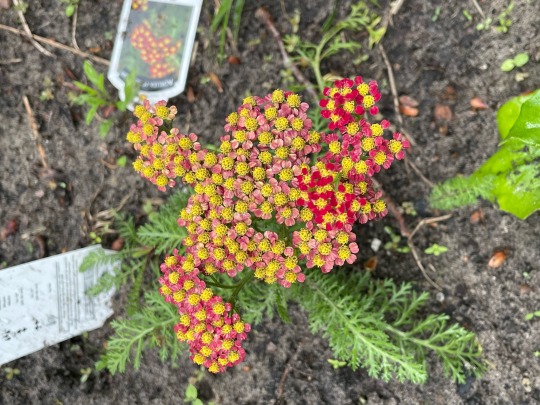
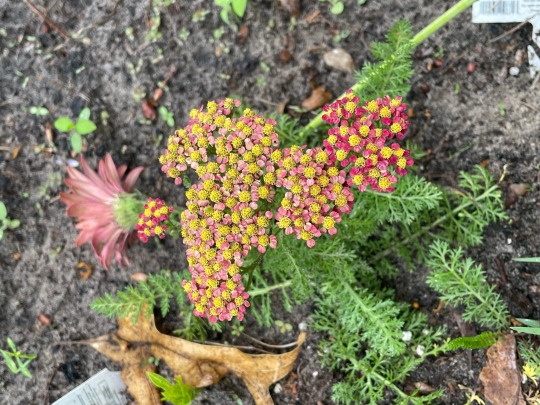
Red, orange, and yellow flowers in my rainy garden.
4/10/23
#pollinator gardening#outdoor gardening#flowers#gardening#red flowers#orange flowers#yellow flowers#zinnias#coreopsis#firespike#milkweed#tropical milkweed#pentas#salvias#yarrow#anis garden#anis garden 2023#out of queue#my garden 2023#flower gardening
31 notes
·
View notes
Text
Yknow the other day in the shower I was really mulling over the idea of making a series of zines like
One on the native milkweeds of Florida + a brief on not planting tropical milkweed
One on popular native/noninvasive pollinator plants for gardeners in Florida
Maybe one on guerrilla gardening (but I am CLEARLY not an expert on that. Or any of these. But I can’t pinpoint a single successful guerrilla garden I’ve done)
And now I’m sitting here and I’m like yknow what the problem with that is?
I just can’t be assed to draw milkweed. Like I love the shape of milkweed flowers and umbels for looking at. Not for drawing though.
18 notes
·
View notes
Text
Getting the last Allium species native to my area that I don’t already have in my garden this weekend!
All but 3 (of 9) of my milkweed species are poking up or more now. I’m not worried about the others. Two of them of them should be coming up soonish and the third won’t be up till sometime in June. Since I got the lovely surprise of finding green comet for sale last year when it wasn’t advertised on the website, I’m hoping I’ll be lucky enough to find one of the other species I don’t have yet.
I’m still amazed that my clammy ground cherry moved a whole foot from where I planted. Not spread, moved. My anise hyssop did the same thing, and it must be content where it put itself because it hasn’t moved an inch in the years since.
Also, my jack-in-pulpit is going to be female this year! That means berries*! If I can get a male to pollinate her with, that is. I know they grow in the ravines though, so maybe I won’t need to if the right insects make their way between here and there.
*They look very pretty and it’s a very tropical-looking plant overall, but very high in calcium oxalates. Not good on the intestines and causes a burning sensation in the mouth. The corms and berries can be eaten but only if they’re completely dried out (months of drying). But I don’t discriminate between barely edible and choice edible in my garden.
8 notes
·
View notes

